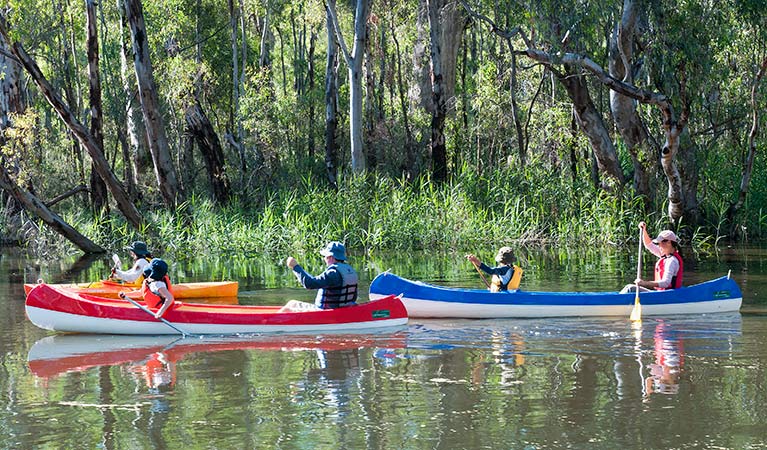Edward River canoe and kayak trail
Murray Valley Regional Park
Overview
Edward River canoe and kayak trail winds through both Murray Valley National and Regional Parks. It's a great paddling spot with camping, picnic, and swimming opportunities. Edward River Bridge picnic area is an ideal start point and has a wheelchair-accessible kayak launch.
- Accessibility
- Medium
- Distance
- 61km of trails
- Time suggested
- 2 days
- Trip Intention Form
-
It's a good idea to let someone know where you're going. Fill in a trip intention form to send important details about your trip to your emergency contact.
- What to
bring - Hat, sunscreen, drinking water
- Please note
- It’s a good idea to check Edward River water levels and flow rates at Toonalook before you set out. These can affect the safety of paddling and your paddling time.
- Edward River is safe and best to paddle when water levels are between 1.6m to 2.4m.
- Edward River is known to have snags in the river. If the water is too low it is impassable and there can be times when you might need to drag your kayak or canoe over a log.
- Edward River does separate into 2 separate streams at times so it's important to take a tracking device like a GPS, and a map.
- If you can't bring your own canoe or kayak then hire and shuttle services are also available.
- There's a wheelchair-accessible kayak launch at Edward River Bridge to help people with mobility restrictions get in and out of the water safely.
- You can book campsites along Edward River.
Kayaking or canoeing Edward River in Murray Valley National Park is a great adventure that awaits you. Spend a few hours on the river, a whole day, or organise a multi-day journey and camp as you go at various places along the way. There's over 60km of water trails giving you so many options.
Edward River is a peaceful, lesser-known alternative to the nearby Murray River, so it’s ideal for paddlers of all age groups and experience levels. It also allows you to escape the summer crowds that can flock to Murray River during the holidays and over long weekends. Along Edward River canoe and kayak trail are beaches and swimming spots, which are great places to stop and have a picnic.
Edward River lies within the traditional lands of the Wamba Wamba and Perrepa Perrepa Nations. The traditional name for the river is ‘Kolety’ (pronounced ‘kol-etch’).
Nearby
-

Sculpture in the Red Gums
Sculpture in the Red Gums is in Murray Valley Regional Park at Edward River Bridge picnic area. It’s a unique way to learn about the rich history of the many different ways people use forests.
-

Edward River Bridge picnic area
Enjoy a riverside family barbecue at Edward River Bridge picnic area at Mathoura, not far from Deniliquin. This picnic area in Murray Valley Regional Park welcomes dogs and is equipped with barbecues and picnic tables.
-

Edward River Bridge campgrounds
Dogs are welcome at Edward River Bridge campgrounds. Located in the Gulpa Island area of Murray Valley Regional Park, there are 6 campgrounds to choose from.
Map
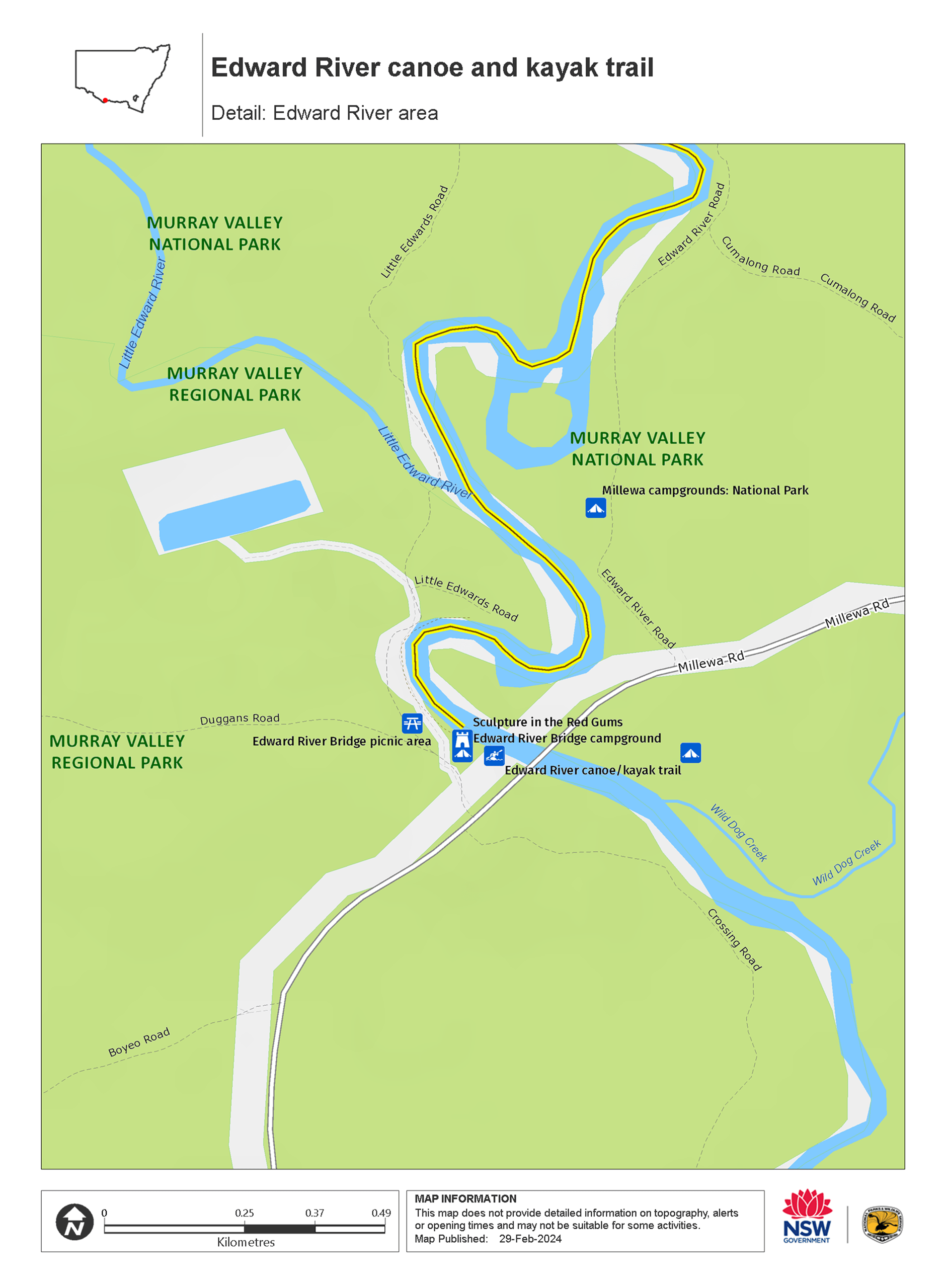
Map legend

Map
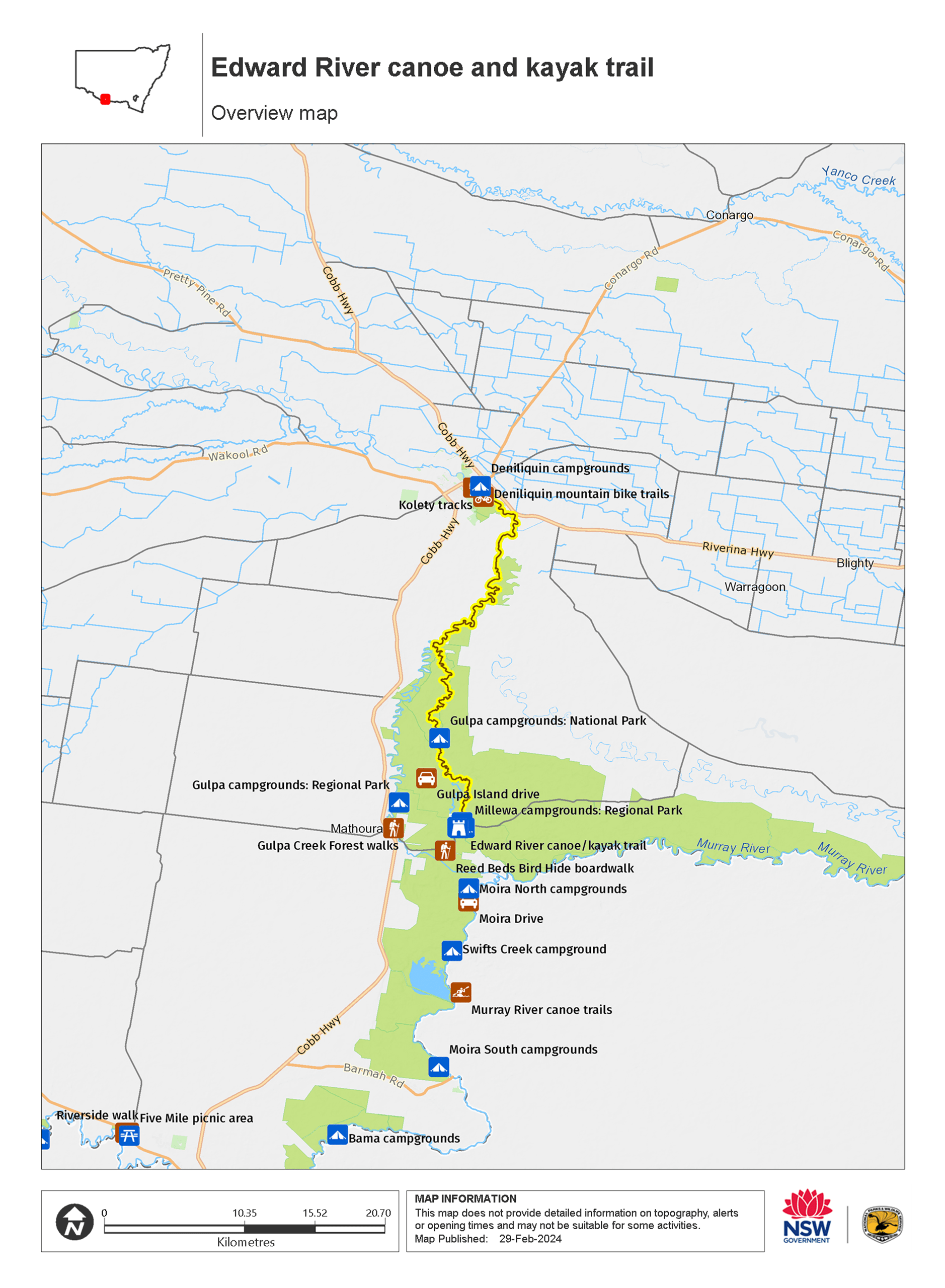
Local alerts
For the latest updates on fires, closures and other alerts in this area, see https://www.nationalparks.nsw.gov.au/things-to-do/canoeing-paddling-experiences/edward-river-canoe-and-kayak-trail/local-alerts
Park info
- in Murray Valley Regional Park in the Murray-Riverina region
Visitor info
All the practical information you need to know about Edward River canoe and kayak trail.
Getting there and parking
Edward River canoe and kayak trail starts in the Gulpa Island area of Murray Valley Regional park and meanders through to the Tuppal, Deniliquin, and Kyalite precincts of Murray Valley National Park.
From Mathoura:
- Take Picnic Point Road for about 7km to the Tocumwal/Millewa Road turn-off to the left towards Edward River campground
- Travel another 2.7km to Edward River Bridge Picnic Area, where you can park you car.
- Use the wheelchair-accessible kayak launch and start your journey downstream, or, paddle 5km upstream to the mouth of Edward River, where a weir controls the water level.
Road quality
Millewa Road is generally an all-weather access road, however you should check the weather before you leave. Millewa Road is unsealed road and can become boggy when it rains.
- Mixture of sealed and unsealed roads
Weather restrictions
- All weather
Parking
Parking is available in a gravel carpark at Edward River Bridge picnic area and it's a short walk from there to the Edward River where the kayak launch is located. The carpark includes 2 concreted accessible parking spaces.
Best times to visit
There are lots of great things waiting for you in Murray Valley National Park. Here are some of the highlights.
Autumn
The perfect time for a camping holiday: the days are cooler and the nights are not yet too chilly.
Spring
If it's been a wet winter white ibis and straw necked ibis will be nesting from late winter through to spring.
Summer
A great time for water activities on the Murray - swimming in the river is a delightful way to spend your time.
Winter
The morning light sparkles on the river; try your hand at fishing for Murray cray.
Facilities
- There are accessible toilets, picnic tables and a barbecue shelter at nearby Edward River Bridge picnic area.
- Drinking water is limited or not available in this area, so it’s a good idea to bring your own.
- You’re encouraged to bring gas or fuel stoves, especially in summer during the fire season.
Step-free access
The area is flat and step-free, with a concrete path that goes from the carpark to the ramp that leads down to the kayak launch.
To get to the toilets and the nearby picnic area, you'll need to cross over a mixture of flat grass and hard-packed ground.
Maps and downloads
Accessibility
Disability access level - medium
Edward River Bridge canoe and kayak launch is mostly flat and step-free, with the following accessible facilities:
- 2 concreted accessible parking spaces
- A concrete pathway that leads from the 2 accessible parking spaces directly to the kayak launch
Nearby Edward River Bridge picnic area has additional accessible facilities including:
- Accessible non-flush toilets
- Accessible picnic tables
The kayak launch at Edward River Bridge is the only accessible kayak launch in the area, so you'll need to return back to this spot to exit the water after you've finished your paddle.
Permitted
Fishing
A current NSW recreational fishing licence is required when fishing in all waters.
Prohibited
Gathering firewood
Chainsaws are prohibited for collecting firewood and any other purpose.
Pets
Pets and domestic animals (other than certified assistance animals) are not permitted. Find out which regional parks allow dog walking and see the pets in parks policy for more information.
Dogs may not be brought into Murray Valley National Park but they are permitted in Murray Valley Regional Park.
Smoking
NSW national parks are no smoking areas.
Learn more
Edward River canoe and kayak trail is in Murray Valley Regional Park. Here are just some of the reasons why this park is special:
Internationally significant wetlands
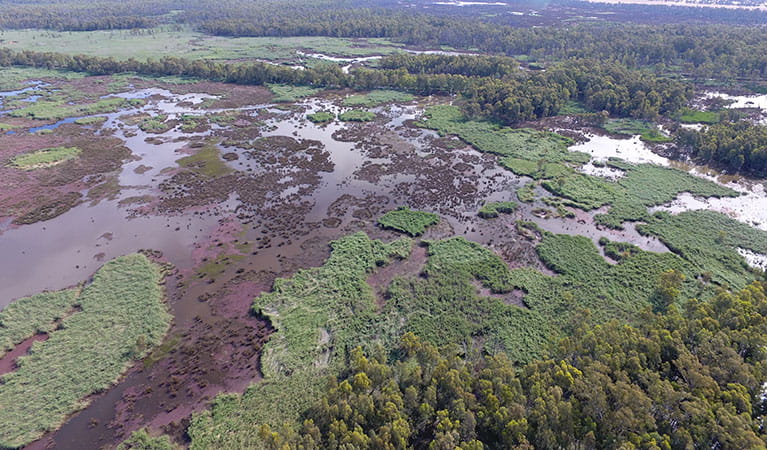
One of the most beautiful and ecologically important features of the river red gum forests is its wetlands. In 2003 the NSW Central Murray forests were listed under the Ramsar Convention of ‘Wetlands of International Importance’, placing these wetlands on the world stage.
- Kolety walking tracks Kolety walking tracks are a hidden oasis at Murray Valley Regional Park, in Deniliquin. Take an easy, dog-friendly stroll through river red gum forest to enjoy colourful birdlife or a riverside picnic.
- Riverside walk Riverside walk is an easy stroll through ancient river red gum forest in Murray Valley Regional Park, near Moama. Stretch your legs and look for yellow rosellas after a barbecue at Five Mile picnic area.
Rich Aboriginal culture
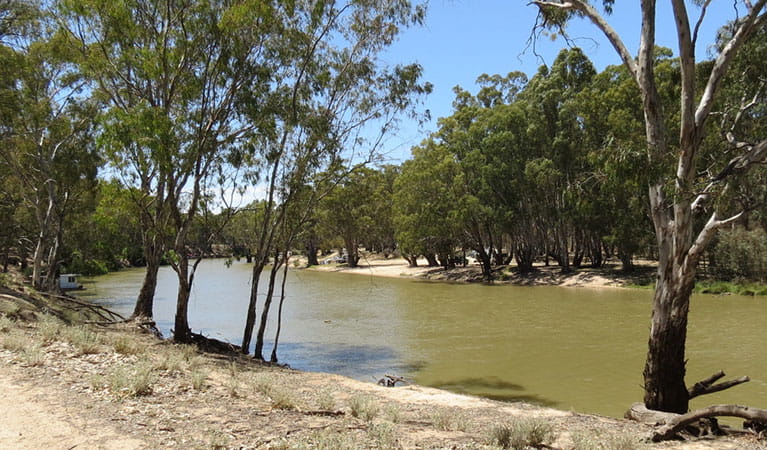
The Murray River region is one of Australia’s oldest living cultural landscapes and local Aboriginal people have a strong connection to the forests and rivers. The river red gum was used for its medicinal properties. A handful of young leaves, crushed and then boiled in water, was used as a liniment that was rubbed in for chest or joint pain, general aches and flu symptoms. Young leaves were also heated in a pit over hot coals and the vapours were inhaled, which helped with the treatment of general sickness.
- Riverside walk Riverside walk is an easy stroll through ancient river red gum forest in Murray Valley Regional Park, near Moama. Stretch your legs and look for yellow rosellas after a barbecue at Five Mile picnic area.
A bird lover's paradise
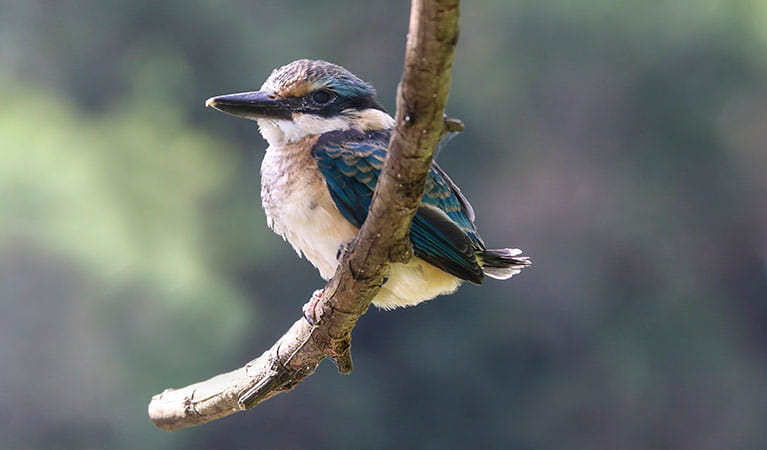
The Ramsar-listed Murray Valley wetland is home to over 60 threatened native animal species and 40 threatened plant species. Lay down the paddle of your canoe and sit in the silence, enjoying the company of egrets and cormorants, and keep an eye out for the superb parrot, slender and bright green. You may also see night herons, black swans, yellow rosellas, ducks, falcons, cockatoos, tree creepers, pardalotes, kingfishers and owls. This truly a bird-lover's paradise.
- Kolety walking tracks Kolety walking tracks are a hidden oasis at Murray Valley Regional Park, in Deniliquin. Take an easy, dog-friendly stroll through river red gum forest to enjoy colourful birdlife or a riverside picnic.
- Riverside walk Riverside walk is an easy stroll through ancient river red gum forest in Murray Valley Regional Park, near Moama. Stretch your legs and look for yellow rosellas after a barbecue at Five Mile picnic area.
Activities for everyone
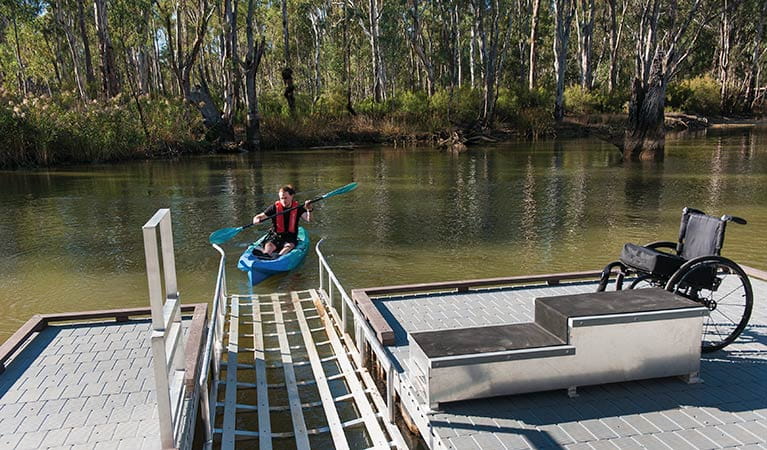
Because Murray Valley Regional Park is broken up into many areas there are experiences found only within a certain area of the park. The Moama (Five Mile) area is unique in that it contains the only formalised mountain bike track within the area. There are beautiful beaches where you can relax and camp over in Barooga and Mulwala and many places to throw in a line if you're keen for a fish.
- Deniliquin mountain bike trails Ride Deniliquin mountain bike trails in Murray Valley Regional Park. This popular singletrack cycling network is perfect for intermediate riders.
- Five Mile mountain bike trail Five Mile mountain bike trail offers 7km of purpose-built mountain bike trails in Murray Valley Regional Park, near Echuca and Moama. The trails are suitable for all skill levels and it's one of the best places for biking in the region.
- Kolety walking tracks Kolety walking tracks are a hidden oasis at Murray Valley Regional Park, in Deniliquin. Take an easy, dog-friendly stroll through river red gum forest to enjoy colourful birdlife or a riverside picnic.
European heritage
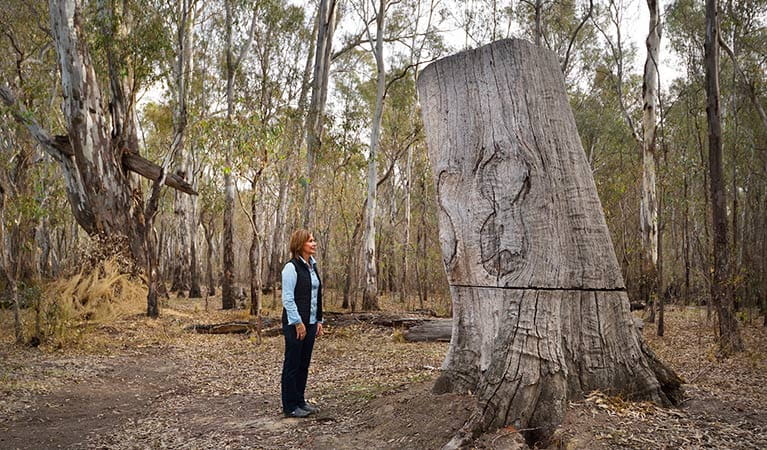
There's lots of hidden European heritage within Murray Valley Regional Park. Keep your eye out for old cattle yards made from River Red Gum sleepers, or peg trees which were used by timber cutters to climb up into the trees.
- Gulpa Creek Forest walks Gulpa Creek Forest walks, in Murray Valley Regional Park, is an easy path to walk along with your dog and great for birdwatching with opportunities to go canoeing or kayaking, not far from Mathoura.
Plants and animals protected in this park
Animals
-

Bare-nosed wombat (Vombatus ursinus)
A large, squat marsupial, the Australian bare-nosed wombat is a burrowing mammal found in coastal forests and mountain ranges across NSW and Victoria. The only other remaining species of wombat in NSW, the endangered southern hairy-nosed wombat, was considered extinct until relatively recently.
-

Common ringtail possum (Pseudocheirus peregrinus)
Commonly found in forests, woodlands and leafy gardens across eastern NSW, the Australian ringtail possum is a tree-dwelling marsupial. With a powerful tail perfectly adapted to grasp objects, it forages in trees for eucalypt leaves, flowers and fruit.
-
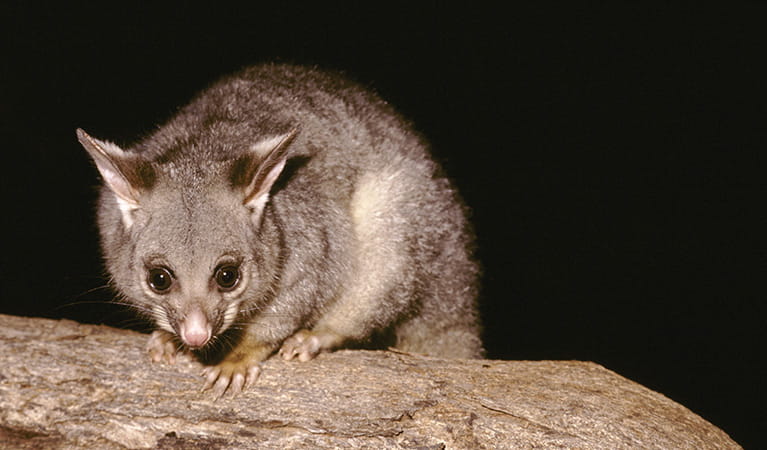
Common brushtail possum (Trichosurus vulpecula)
One of the most widespread of Australian tree-dwelling marsupials, the common brushtail possum is found across most of NSW in woodlands, rainforests and urban areas. With strong claws, a prehensile tail and opposable digits, these native Australian animals are well-adapted for life amongst the trees.
-
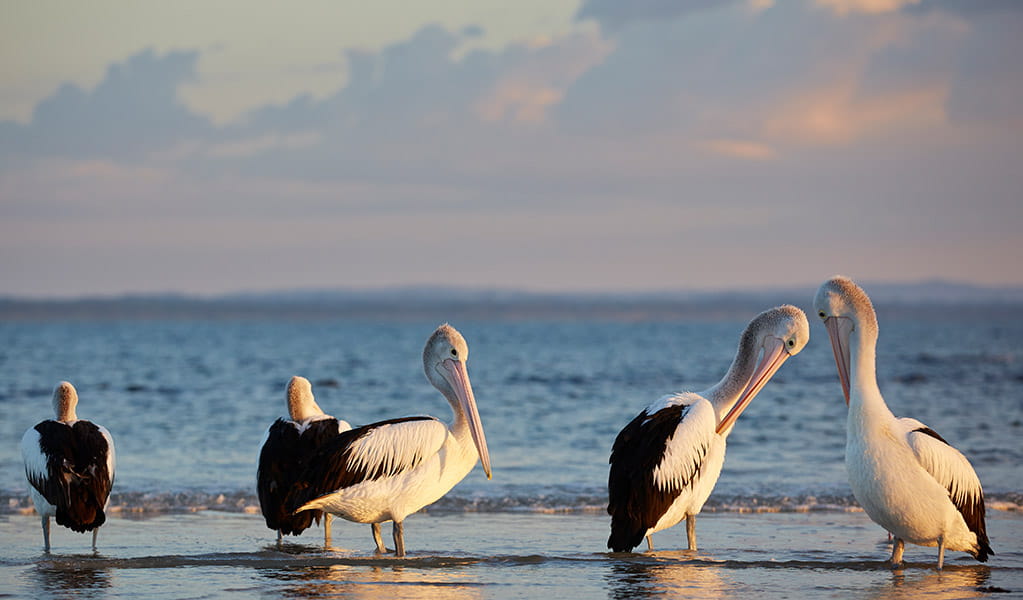
Australian pelican (Pelecanus conspicillatus)
The curious pelican is Australia’s largest flying bird and has the longest bill of any bird in the world. These Australian birds are found throughout Australian waterways and the pelican uses its throat pouch to trawl for fish. Pelicans breed all year round, congregating in large colonies on secluded beaches and islands.
-
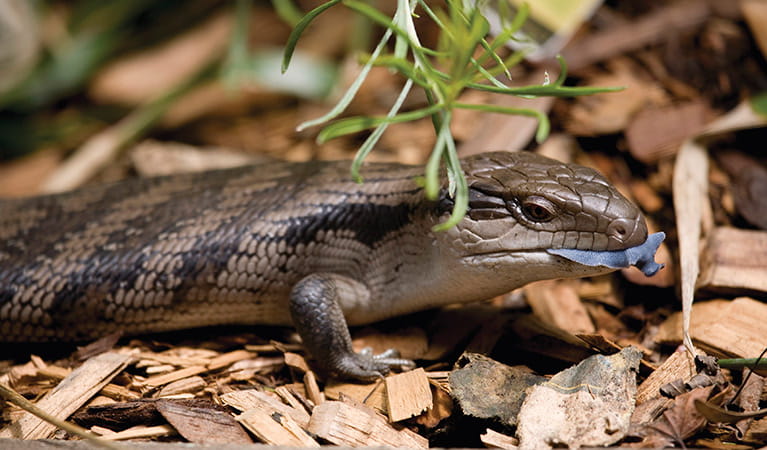
Eastern blue-tongue lizard (Tiliqua scinciodes)
The eastern blue-tongue lizard, one of the largest skinks in Australia, is found throughout most of NSW. When threatened, the eastern blue-tongue lizard displays its blue tongue in a wide-mouthed intimidating show. Not an agile animal, they feed on slow-moving beetles and snails.
-
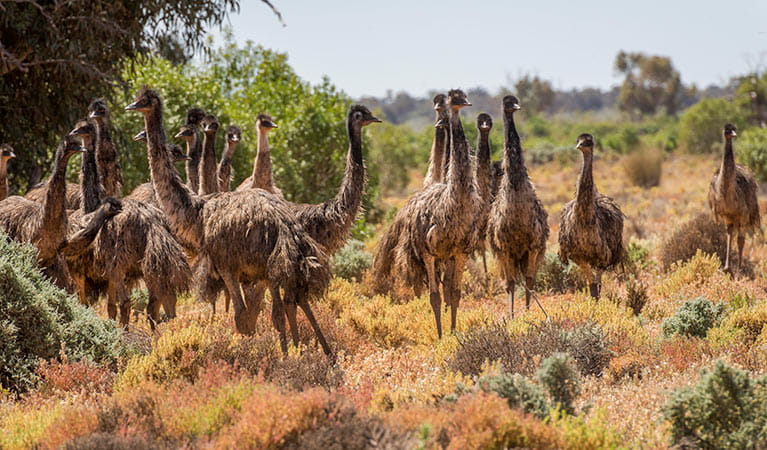
Emu (Dromaius novaehollandiae)
The largest of Australian birds, the emu stands up to 2m high and is the second largest bird in the world, after the ostrich. Emus live in pairs or family groups. The male emu incubates and rears the young, which will stay with the adult emus for up to 2 years.
-
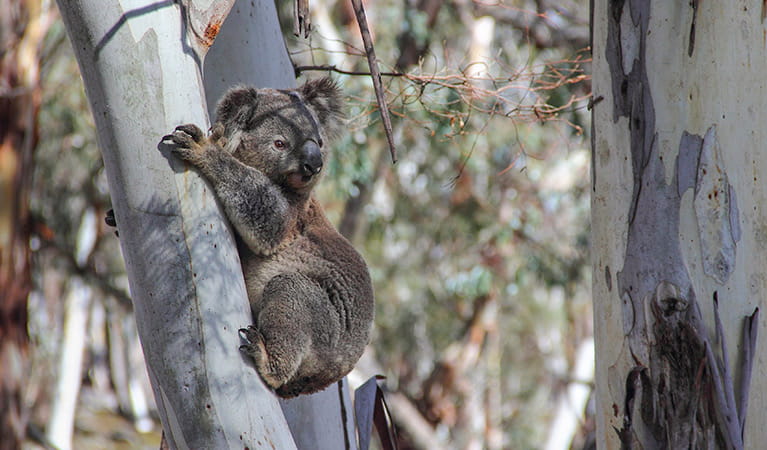
Koala (Phascolarctos cinereus)
One of the most renowned Australian animals, the tree-dwelling marsupial koala can be found in gum tree forests and woodlands across eastern NSW, Victoria and Queensland, as well as in isolated regions in South Australia. With a vice-like grip, this perhaps most iconic but endangered Australian animal lives in tall eucalypts within a home range of several hectares.
-
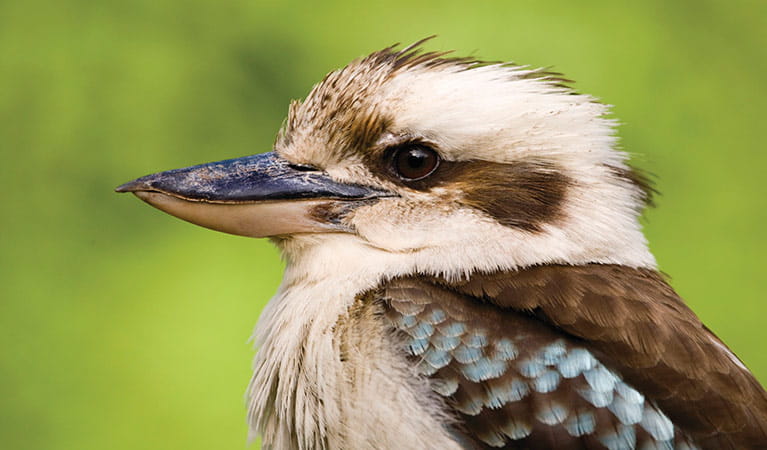
Kookaburra (Dacelo novaeguineae)
Of the 2 species of kookaburra found in Australia, the laughing kookaburra is the best-known and the largest of the native kingfishers. With its distinctive riotous call, the laughing kookaburra is commonly heard in open woodlands and forests throughout NSW national parks, making these ideal spots for bird watching.
-
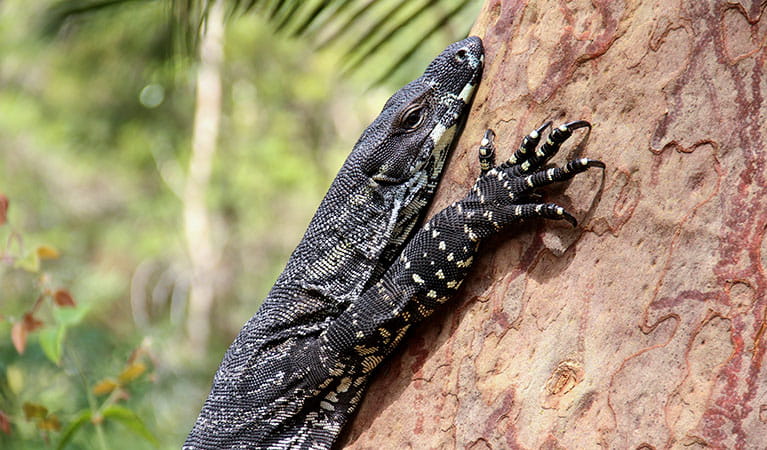
Lace monitor (Varanus varius)
One of Australia’s largest lizards, the carnivorous tree-dwelling lace monitor, or tree goanna, can grow to 2m in length and is found in forests and coastal tablelands across eastern Australia. These Australian animals are typically dark blue in colour with whitish spots or blotches.
-
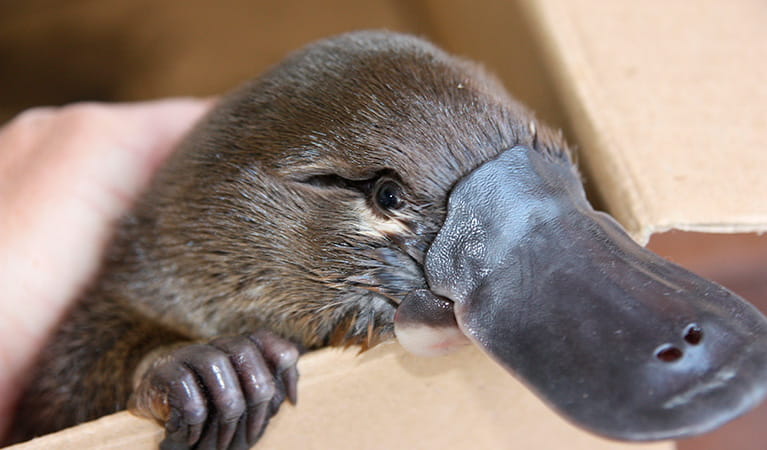
Platypus (Ornithorhynchus anatinus)
One of the most fascinating and unusual Australian animals, the duck-billed platypus, along with the echidna, are the only known monotremes, or egg-laying mammals, in existence. The platypus is generally found in permanent river systems and lakes in southern and eastern NSW and east and west of the Great Dividing Range.
-
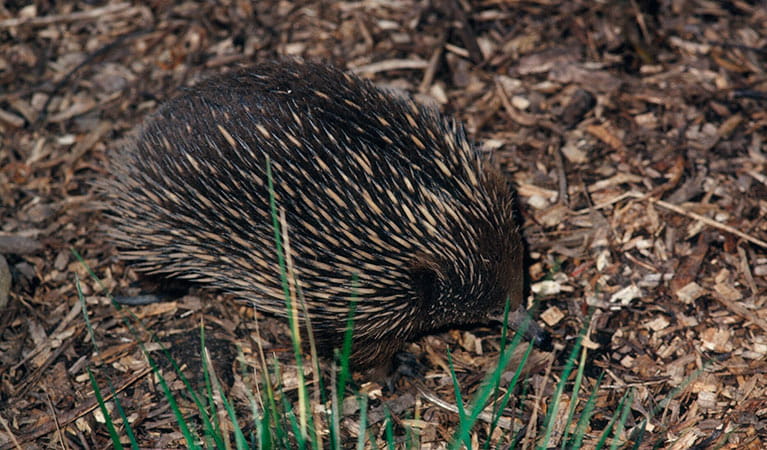
Short-beaked echidna (Tachyglossus aculeatus)
One of only 2 egg-laying mammals in the world, the short-beaked echidna is one of the most widespread of Australian native animals. Covered in spines, or quills, they’re equipped with a keen sense of smell and a tube-like snout which they use to break apart termite mounds in search of ants.
-

Southern boobook (Ninox novaeseelandiae)
The southern boobook, also known as the mopoke, is the smallest and most common native owl in Australia. With a musical 'boo-book' call that echoes through forests and woodlands, the southern boobook is a great one to look out for while bird watching.
-
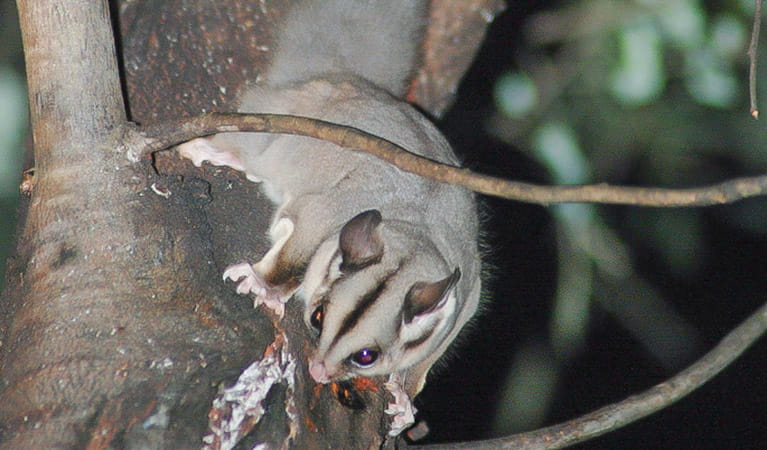
Sugar glider (Petaurus breviceps)
The sugar glider is a tree-dwelling Australian native marsupial, found in tall eucalypt forests and woodlands along eastern NSW. The nocturnal sugar glider feeds on insects and birds, and satisfies its sweet tooth with nectar and pollens.
-
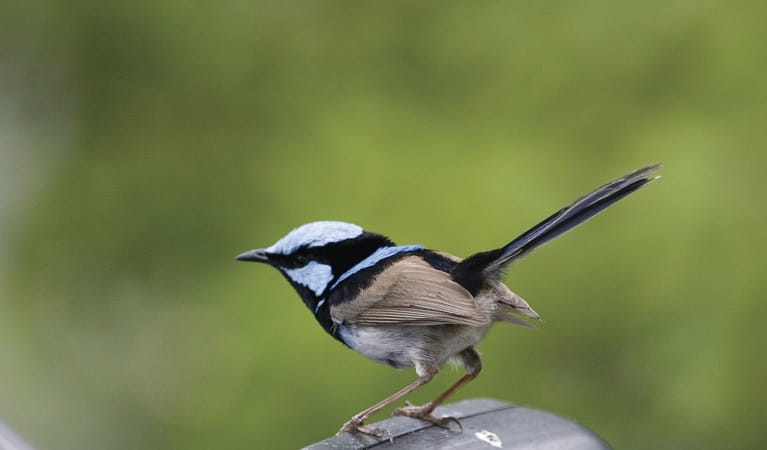
Superb fairy wren (Malurus cyaneus)
The striking blue and black plumage of the adult male superb fairy wren makes for colourful bird watching across south-eastern Australia. The sociable superb fairy wrens, or blue wrens, are Australian birds living in groups consisting of a dominant male, mouse-brown female ‘jenny wrens’ and several tawny-brown juveniles.
-

Swamp wallaby (Wallabia bicolor)
The swamp wallaby, also known as the black wallaby or black pademelon, lives in the dense understorey of rainforests, woodlands and dry sclerophyll forest along eastern Australia. This unique Australian macropod has a dark black-grey coat with a distinctive light-coloured cheek stripe.
-
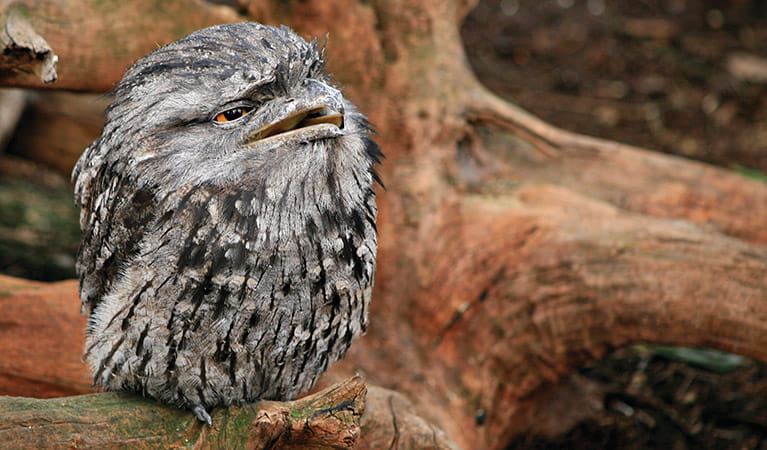
Tawny frogmouth (Podargus strigoides)
Found throughout Australia, the tawny frogmouth is often mistaken for an owl due to its wide, powerful beak, large head and nocturnal hunting habits. The ‘oom oom oom’ call of this native bird can be heard echoing throughout a range of habitats including heath, woodlands and urban areas.
-
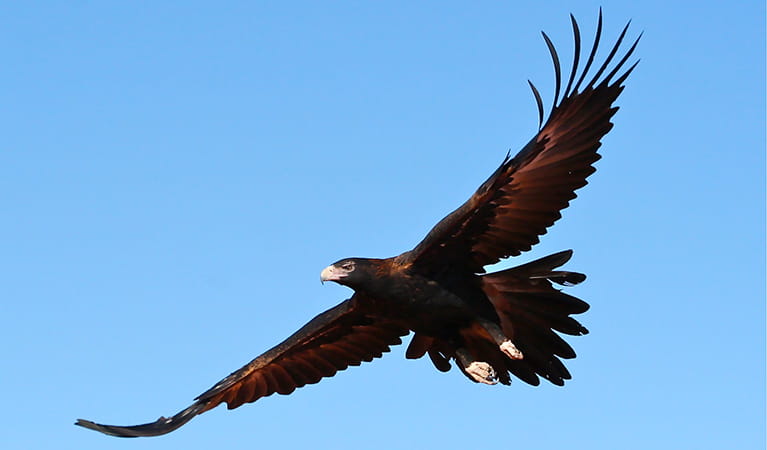
Wedge-tailed eagle (Aquila audax)
With a wingspan of up to 2.5m, the wedge-tailed eagle is Australia’s largest bird of prey. These Australian animals are found in woodlands across NSW, and have the ability to soar to heights of over 2km. If you’re bird watching, look out for the distinctive diamond-shaped tail of the eagle.
-

White-bellied sea eagle (Haliaeetus leucogaster)
White-bellied sea eagles can be easily identified by their white tail and dark grey wings. These raptors are often spotted cruising the coastal breezes throughout Australia, and make for some scenic bird watching. Powerful Australian birds of prey, they are known to mate for life, and return each year to the same nest to breed.
Plants
-
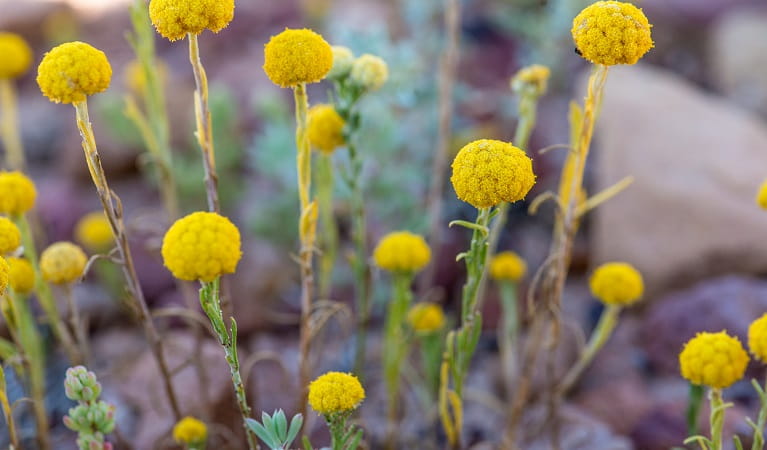
Billy buttons (Craspedia spp. )
Billy buttons are attractive Australian native plants that are widespread throughout eastern NSW in dry forest, grassland and alpine regions such as Kosciuszko National Park. The golden-yellow globe-shaped flowers are also known as woollyheads. Related to the daisy, billy buttons are an erect herb growing to a height of 50cm.
-
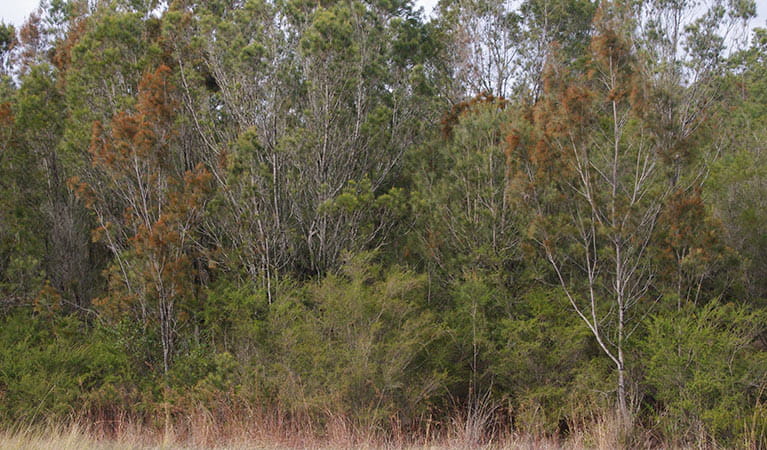
Black sheoak (Allocasuarina littoralis)
The black sheoak is one of a number of casuarina species found across the east coast of Australia and nearby tablelands. Growing to a height of 5-15m, these hardy Australian native plants can survive in poor or sandy soils. The barrel-shaped cone of the black sheoak grows to 10-30mm long.
-
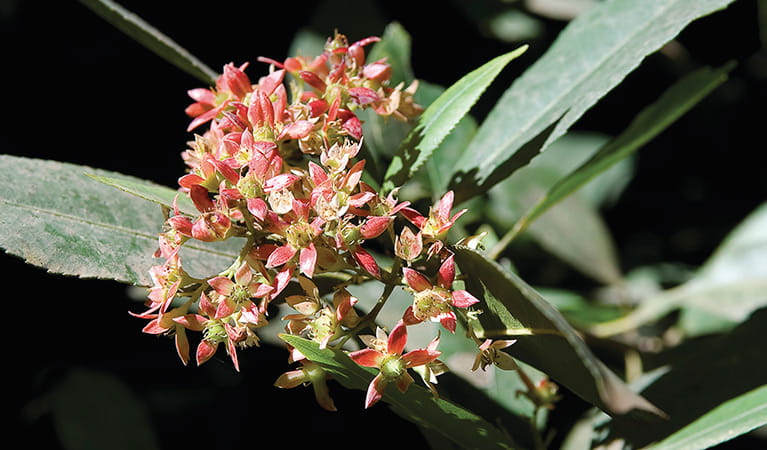
Coachwood (Ceratopetalum apetalum)
Coachwood trees are Australian native plants that grow in warm temperate rainforests along coastal NSW. Also known as scented satinwood, the mottled grey bark of the coachwood has horizontal markings and a delicate fragrance.
-
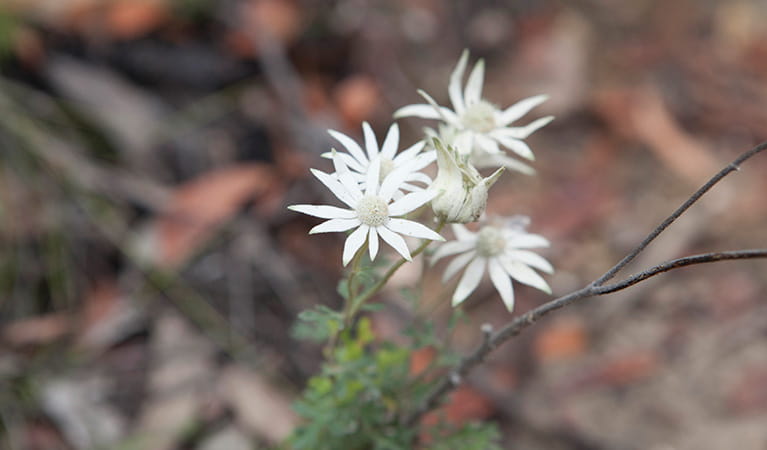
Flannel flower (Actinotus helianthi)
The delicate flannel flower is so named because of the soft woolly feel of the plant. Growing in the NSW south coast region, extending to Narrabri in the Central West and up to south-east Queensland, its white or pink flowers bloom all year long, with an extra burst of colour in the spring.
-
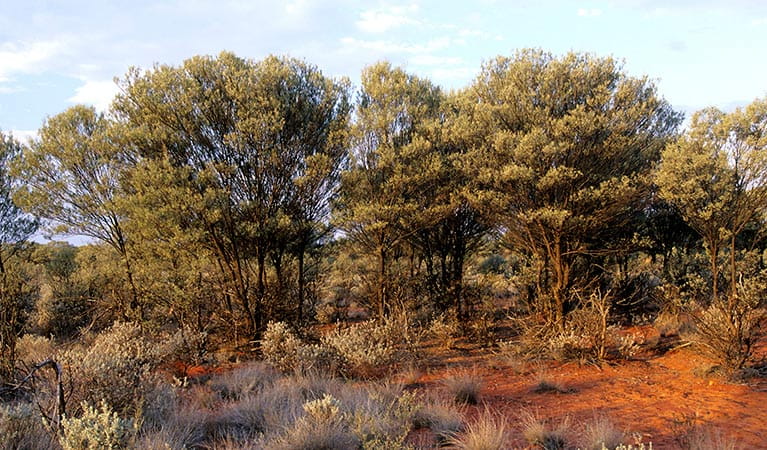
Mulga (Acacia aneura)
Mulga are hardy Australian native plants found throughout inland Australia. With an unusually long tap root, the mulga is able to withstand long periods of drought.
-
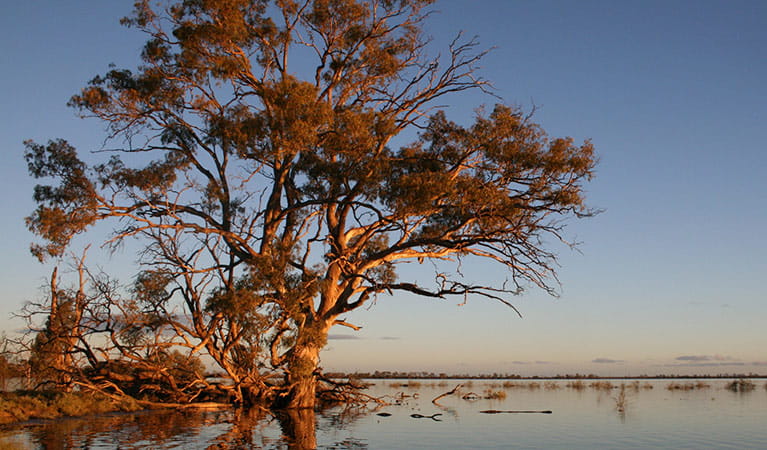
River red gum (Eucalpytus camaldulensis)
Australian native plants, majestic river red gum trees are widespread across Australian inland river systems. The river red gum is a dominant tree species of the Murray-Darling basin which spans NSW, Queensland and Victoria. This iconic native eucalypt grows to a height of 30m and is thought to have a lifespan up to 500-1000 years.
-
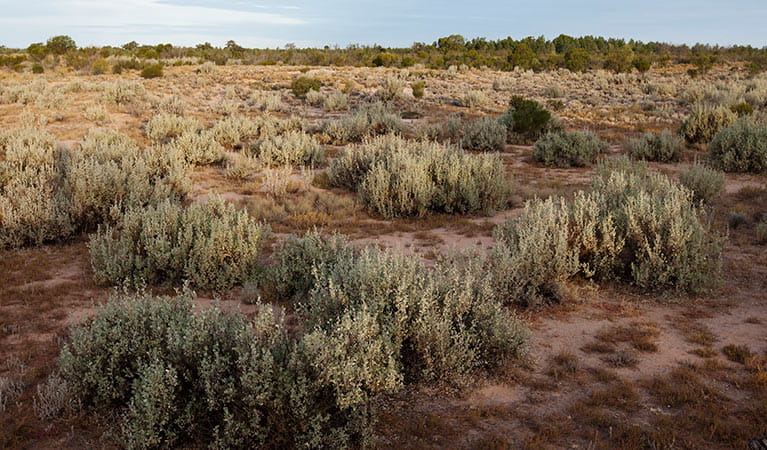
Saltbush (Atriplex nummularia)
A hardy Australian native plant, the saltbush is a small spreading shrub that can withstand dry salty soils such as those found in the desert plains of western NSW. It is grey-white in colour and has small spear-shaped succulent leaves. It flowers from December to April.

